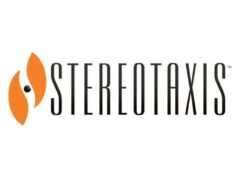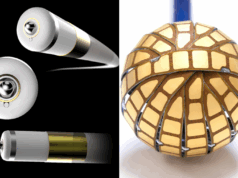
New trial data recently presented at the European Society of Cardiology (ESC) Congress, in Barcelona, Spain, confirm the clinical benefits of Biotronik Home Monitoring. Biotronik Home Monitoring is the first and only fully wireless, mobile remote monitoring system for patients with implantable cardiac devices on the market today and reports from the ESC provided further clinical evidence to support its use in daily practice.
Over eight years ago, Biotronik was first to develop and introduce, an internet-based, wireless remote monitoring system using the GSM telephone network. Today, more than 200,000 Biotronik Home Monitoring systems have been implanted, in more than 65 countries worldwide helping to optimise patient care. All Biotronik pacemakers, implantable cardioverter defibrillators and cardiac resincronisation therapy devices are compatible with the Biotronik Home Monitoring system which allows remote device follow-up at any time from anywhere in the world. The new Biotronik Home Monitoringwireless, web-based system automatically reviews, filters and communicates only the most clinically relevant data on a patient-by-patient basis, providing immediate and detailed information about significant changes in device and patient status.
Niraj Varma, TRUST Trial principal investigator, Cleveland Clinic, Cleveland, US, presented new data from the TRUST (Lumos-T safely reduces routine office device follow up) trial supporting remote telemetry for the early detection of clinical events and the safe reduction of in-office follow-up visits. This new TRUST trial data confirmed that Biotronik Home Monitoring can safely and effectively replace conventional in-office device follow-up visits. Patients can be monitored safely using the Home Monitoring wireless system with only one routine in-office visit per year.
The latest TRUST data demonstrated that the event notifications generated from the Biotronik Home Monitoring system provide accurate information, even for important silent clinical events (eg asymptomatic VT/VF or atrial fibrillation). Biotronik Home Monitoring platform with automatic daily surveillance provided early detection and notification of both symptomatic and asymptomatic arrhythmic events, enabling physician intervention much sooner than conventional follow-up, according to the TRUST investigators.
Patients were evaluated earlier by their physician when significant changes occurred in their implanted devices or cardiac condition. Clinically relevant remote monitoring event notifications were evaluated after a median of just three days compared to more than 30 days with conventional care. The researchers also concluded that event notifications generated by remote monitoring with automatic daily surveillance occurred infrequently, without overburdening clinic resources, and provided rapid detection and notification of important clinical events.
“There has been a call from the medical community for remote monitoring of patients with implantable cardiac devices in a large-scale (1,443 patients), prospective clinical trial to test this technology. TRUST demonstrated that Biotronik Home Monitoring, an advanced automatic remote monitoring system, can streamline hospital visits and enhance surveillance for important device- or patient-related clinical data. These results have important implications for improved patient safety,” stated Varma.
Another interesting aspect of device patient care presented at this year’s ESC meeting included the latest data from the REFORMtrial, a prospective randomised multicentre study in MADIT-II patients comparing a simplified one-year follow-up regimen using remote monitoring with a conventional three-month in-clinic follow-up scheme.
Cost differences between the two follow-up modalities were measured for factors such as physician and staff time, total number of hospitalisations, length of cardiac-related hospitalisations, duration of follow-ups, unplanned additional follow-ups, travel and patient quality-of-life. The REFORM study showed that the total follow-up burden in MADIT II patients can be reduced by more than 2.5 follow-ups per patient per year using the simplified remote follow-up scheme with BIOTRONIK Home Monitoring, while maintaining patient safety and comfort.
In another ESC session, Schirdewan, Charite University Medical Centre, Berlin, Germany and colleagues from four other German cardiac centres presented the initial results of their research titled ISMOS (Home monitoring-guided follow-up with six-month interval: a telecardiologic prospective, randomised multicenter study). The ISMOS trial evaluated whether the use of cellular-based, mobile monitoring of implanted cardiac defibrillators was a safe alternative to standard in-clinic device follow-ups in 142 patients over a period of more than two years. ISMOS demonstrated that the number of standard in-clinic follow-ups can be reduced from quarterly to semi-annual visits using Biotronik Home Monitoring without compromising patient safety. The overall clinical workload was significantly reduced in the group of patients monitored via remote telemetry. In addition, the ISMOS trial showed that Biotronik Home Monitoring system can provide physicians and staff valuable clinical information concerning the patients’ cardiac status and device function on an immediate basis, unlike traditional patient follow-up routines which fail to provide timely feedback on many clinically relevant, yet asymptomatic, events.









